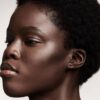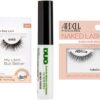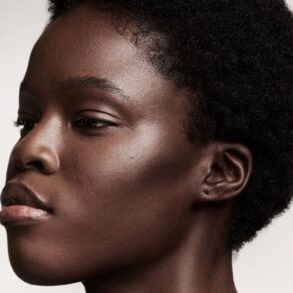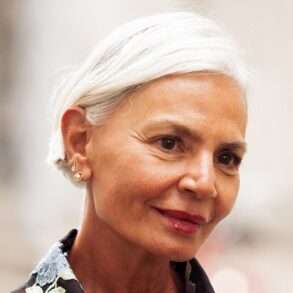
When the murder of George Floyd by a Minneapolis police officer sparked a global racial reckoning in 2020, companies and individuals alike rallied at an unprecedented scale to pledge their commitment to advancing racial justice.
In the beauty realm, the Estée Lauder Cos. and Unilever both made commitments to increase spend with diverse ingredient and packaging suppliers; LVMH Möet Hennessy Louis Vuitton sent out an internal memo declaring its “unyielding dedication to inclusivity” and rolled out plans for unconscious bias employee trainings; L’Oréal established a Global Diversity, Equity and Inclusion Advisory Board, and Procter & Gamble launched its “Take on Race” fund to support racial justice organizations. The list goes on.
A common theme among the flurry of company-issued statements in the weeks that followed was a pledge to accelerate diverse representation across the workforce, particularly at the leadership level. It was by no means the first time companies had made commitments of the like, but between the effects of the COVID-19 pandemic, heightened racial tensions and a looming, high-stakes presidential election, many felt the prospect of progress toward corporate accountability in terms of diversity and inclusion was more tangible than ever.
Three years later, the path to progress in terms of gender and racial equity has proven far from straightforward.
While headway has indeed been made in some regards — for instance, a number of beauty’s biggest manufacturers have achieved or are nearing gender parity on their boards of directors and executive committees — it has lagged in others, like representation of women of color in the upper echelons of these same companies.
“We are moving in the right direction, but we are not moving fast enough,” said Aniela Unguresan, founder and chief executive officer of Edge Empower, a firm which develops diversity, equity and inclusivity strategies for 250-plus companies including Firmenich and L’Oréal.
In 2017 — when Beauty Inc first began tracking female representation in the beauty industry — none of the 10 largest beauty manufacturers had reached gender parity on their boards. L’Oreal took the top spot that year with a female board composition of 46 percent, while Amorepacific Group, Beiersdorf and Kao Group all had no women on their boards, let alone women of color.
Even Coty Inc. at the time had only one female board member and one woman on its executive committee.
But today, the picture is different. Coty’s executive committee and board are both majority-female. Coty is also one of only two companies in the top 20 — alongside Bath and Body Works — to be led by a female chief executive officer, following Sue Nabi’s appointment to the role in July 2020. Gina Boswell is the head of BBW.
As the only serving transgender CEO of a major multinational fragrance and cosmetics corporation worldwide, Nabi’s appointment — like any high-ranking appointment of a member of an underrepresented group — is important on many levels.
“When people feel like they can see themselves in a company, at all levels of the company, that affects how they feel about whether or not promotions are fair, whether they feel pay is fair, whether they feel their manager involves them in decisions that affect their work,” said Michael C. Bush, CEO of diversity data company Great Place to Work. “We don’t just look at representation on its own, we look to see whether representation affects the employee experience — and it does.”
Just ask E.l.f. Beauty CEO Tarang Amin, who has now led the company through multiple consecutive quarters of net sales growth, including most recently the acquisition of Naturium for $355 million in August. “Our employee base is a competitive advantage,” he said in an interview with Beauty Inc earlier this year.
The company is one of only four public companies in the U.S. with a board of directors composed of at least two-thirds women and one-third minority representation, and E.l.f.’s workforce of 330 is more than 75 percent women and more than 40 percent diverse.
“It’s crucial not to prioritize cultural uniformity. It’s important to reach beyond the usual circles of familiarity, even if that means investing more time and effort [into a search],” said Shella Abe, co-head of consumer practice at global recruitment firm True Search.
Simply put, a diverse employee makeup is good business.
In fact, data from McKinsey shows companies in the top quartile for gender diversity in the C-suite were 25 percent more likely than companies in the fourth quartile to have above-average profitability; when it comes to ethnic diversity, this likelihood jumps to 36 percent.
“Diversity, equity and inclusion programs don’t exist to create privileges for part of the employee population based on their identities — they exist to create better, more sustainable, agile and resilient businesses,” said Unguresan.
Yet data from Edge shows that despite comprising a median 69 percent of the personal care industry’s total workforce, women make up just 36 percent of the top management level. Results of a spring 2023 survey taken by 4,000 personal care industry employees indicate that age, race/ethnicity, and disability — in that order — are perceived to be the top factors inhibiting a person’s likelihood of getting hired in the industry.
Thanks to initiatives like Nasdaq’s Board Diversity Rule, which requires companies listed on its U.S. exchange to publicly disclose board-level diversity statistics each year, board diversity is expected to steadily improve. By the end of 2025, companies listed on the Nasdaq must have at least two diverse board directors — or be able to explain why they don’t.
“If a company wants to make statements to the world about what it’s doing in terms of diversity, equity and belonging, you should know that’s going to work for you and against you. And because verification is very easy for the consumer today — it can very easily work against you,” said Bush.
Excluding privately owned Chanel Beauty and Mary Kay, neither of whom commented on the composition of their boards nor display this information publicly, the remaining 18 largest beauty manufacturers, as measured by global sales in the 2023 WWD Beauty Inc Top 100, have a mean average 36 percent female board composition. Executive committees among the top 18 companies — excluding Chanel and LG Household & Health Care which declined to comment — average 34 percent women representation.
Founded in 2020, the Women on Boards Project is one organization aiming to boost diverse board representation, having placed 50 women (10 of whom have been women of color) on boards of consumer goods companies including The Honey Pot Co., Simple Mills and feminine care brand, Lola.
“We put the pressure on private equity groups — some of whom will be sitting on two to three board seats, all representing the same voice — to give up their board seat or nominate an independent [director],” said Brianna Rizzo, a talent manager at VMG Partners and board member of WOBP, adding that while recent diversity mandates by Nasdaq and Goldman Sachs are necessary to turning the tide at the publicly traded company level, “there is still no accountability for early-stage consumer companies.”
One could argue that there isn’t enough accountability for large companies, either, when it comes to disclosing the racial makeup of their leadership teams — a framework even fewer were willing to divulge.
In some cases this is due to legal restrictions regarding the collection of race and ethnicity data in countries like France, where L’Oréal and LVMH Möet Hennessy Louis Vuitton are headquartered. In most others, companies simply weren’t willing to publicize this information.
In all, seven of beauty’s 20 biggest companies shared with Beauty Inc the number of women of color on their boards and executive committees. Those boards have a mean average 21 percent women of color representation, and within their executive committees, a mean average 10 percent women of color representation. (For reference, 2021 data from Catalyst indicates women of color comprise just over 20 percent of the U.S. population).
In an effort to increase transparency and trust, some companies have begun releasing annual progress updates with regard to the racial and gender composition of their workforce.
Natura & Co., for example, has set targets in Brazil — its largest market — to reach 40 percent representation of Black employees by 2025, and 30 percent in management positions by 2030.
Henkel, meanwhile, aims to reach gender parity across all management levels by 2025 and reported that in 2022, women accounted for 39 percent of its management positions.
The Estée Lauder Cos. will reveal in its Social Impact & Sustainability Report set to be released next month that the company met its goal to achieve global pay equity across R&D, supply chain including manufacturing and distribution and corporate functions, and brands and regions globally.
Beiersdorf reached its goal to achieve gender parity across global leadership positions in January of this year — ahead of its 2025 objective — but it remains that the company only has one woman of color on its 12-person board, and no women of color on its executive committee.
“Diversity, equity and inclusion is not a program you run for one year and then you’re done with it — it is a lens that needs to be embedded in all the talent management processes, in all the human capital strategies, in all the core business operations of the organization — it is an ongoing process,” Unguresan said.
In what appeared to be an effort to accomplish that, a plethora of chief diversity officer roles were created in 2020 — only for many to have already been eliminated in the time since, while others have struggled to retain occupancy.
Data from Great Place to Work shows the average chief diversity officer remains in their role for roughly 2.5 years, namely due to lack of support and resources. And that revolving door has been apparent — this past summer alone, Netflix, Disney and Warner Bros. Discovery all announced their diversity, equity and inclusion executives were departing the companies.
“We put a lot of expectations behind the role of the chief diversity officer, which is not to solve the problem for the company — it is to empower the company to effectively tackle those problems,” said Unguresan.
Aside from missteps in setting up chief diversity officers for success, businesses in beauty and beyond have been criticized for what many perceive to be performative allyship rather than a true dedication to moving the needle. For some such companies, momentum on the diversity and equity front has slowed significantly since 2020.
“We saw a lot of companies who made commitments to diversity, equity and inclusion in 2020 made minimal investments, and then became frustrated when their employees, shareholders and the public held them to account,” said Joelle Emerson, cofounder and CEO of diversity, equity and inclusion training platform Paradigm IQ. “Diversity, equity and inclusion can’t be performative — it needs to be a priority to be successful.”
Some posit that the U.S. Supreme Court’s historic reversal of affirmative action in college admissions this past summer may create a spillover effect and inspire backlash — or precisely the kind of de-prioritization that leads to failure — when it comes to companies’ diversity, equity and inclusion efforts.
Janou Pakter, who cofounded recruiting company Būro Talent alongside Damian Chiam in 2014 and has since placed executives at Chanel, Aesop, Jo Malone and other fashion and beauty companies, has already seen this begin to take effect.
“We had one comment recently from a client who said, ‘Oh, we don’t have to worry about that anymore,’ in regard to diverse hiring — that was shocking,” said Pakter.
“Those companies who were never truly convinced of the business value of diversity, equity and inclusion, who engaged in it only because they felt the social pressure to — they are the most likely to discontinue their efforts after the Supreme Court decision,” said Unguresan.
But for those aiming to embed a true commitment to diversity, equity and inclusion into the fabric of their companies, the learnings from the past three years are there.
“When it comes to diversity, equity and inclusion, we are very used to throwing money at the problem rather than understanding the root causes,” added Unguresan. “There has been this trend of, ‘let’s run an unconscious bias training, let’s have a mentorship program’ — those are important, yes, but the only way to stay on target is to address the specific needs of the organization, and sometimes companies do skip this first step in getting an honest view of where they are.”
Diversity, equity and inclusion efforts that don’t extend beyond the hiring process and into a company’s everyday culture do nothing to meaningfully challenge the status quo of underrepresentation at the leadership level — or any level, because they don’t address employee retention.
“Leaders who are very good at leading only people like them they are not good at leading people who are different than them. So you might check that box, but that person is going to leave — which has been happening,” said Bush.
Diversity in the Top 20
L’Oréal
Women on Board of Directors: 44 percent (7 out of 16)
Women of Color on Board of Directors: Did not disclose
Women on Executive Committee: 31 percent (6 out of 19)
Women of Color on Executive Committee: Did not disclose
Unilever
Women on Board of Directors: 38 percent (5 out of 13)
Women of Color on Board of Directors: Did not disclose
Women on Executive Committee: 17 percent (2 out of 12)
Women of Color on Executive Committee: Did not disclose
The Estée Lauder Cos.
Women on Board of Directors: 44 percent (7 out of 16)
Women of Color on Board of Directors: 19 percent (3 out of 16)
Women on Executive Committee: 33 percent (5 out of 15)
Women of Color on Executive Committee: 13 percent (2 out of 15)
P&G
Women on Board of Directors: 46 percent (6 out of 13)
Women of Color on Board of Directors: 15 percent (2 out of 13)
Women on Executive Committee: 32 percent (11 out of 34)
Women of Color on Executive Committee: 9 percent (3 out of 34)
Shiseido
Women on Board of Directors: 40 percent (6 out of 15)
Women of Color on Board of Directors: Did not disclose
Women on Executive Committee: 32 percent (7 out of 22)
Women of Color on Executive Committee: Did not disclose
LVMH Möet Hennessy Louis Vuitton
Women on Board of Directors: 50 percent (8 out of 16)
Women of Color on Board of Directors: Did not disclose
Women on Executive Committee: 13 percent (2 out of 15)
Women of Color on Executive Committee: Did not disclose
Beiersdorf
Women on Board of Directors: 42 percent (5 out of 12)
Women of Color on Board of Directors: 8 percent (1 out of 12)
Women on Executive Committee: 44 percent (4 out of 9)
Women of Color on Executive Committee: 0 percent (0 out of 9)
Chanel (Declined to disclose)
Natura & Co
Women on Board of Directors: 22 percent (2 out of 9)
Women of Color on Board of Directors: 22 percent (2 out of 9)
Women on Executive Committee: 25 percent (2 out of 8)
Women of Color on Executive Committee: 0 percent (0 out of 8)
Coty
Women on Board of Directors: 55 percent (6 out of 11)
Women of Color on Board of Directors: Did not disclose
Women on Executive Committee: 60 percent (3 out of 5)
Women of Color on Executive Committee: Did not disclose
Bath and Body Works
Women on Board of Directors: 46 percent (6 out of 13)
Women of Color on Board of Directors: 23 percent (3 out of 13)
Women on Executive Committee: 67 percent (4 out of 6)
Women of Color on Executive Committee: 17 percent (1 out of 6)
Kao Corp.
Women on Board of Directors: 21 percent (3 out of 14)
Women of Color on Board of Directors: Did not disclose
Women on Executive Committee: 10 percent (3 out of 30)
Women of Color on Executive Committee: Did not disclose
Kenvue
Women on Board of Directors: 36 percent (4 out of 11)
Women of Color on Board of Directors: Did not disclose
Women on Executive Committee: 59 percent (10 out of 17)
Women of Color on Executive Committee: Did not disclose
Mary Kay (Declined to comment; publicly available information included)
Women on Executive Committee: 46 percent (6 out of 13)
Women of Color on Executive Committee: Did not disclose
Henkel
Women on Board of Directors: 20 percent (1 out of 5)
Women of Color on Board of Directors: Did not disclose
Women on Executive Committee: 20 percent (1 out of 5)
Women of Color on Executive Committee: Did not disclose
Puig (Declined to comment)
Women on Board of Directors: 14 percent (2 out of 14)
Women of Color on Board of Directors: Did not disclose
Women on Executive Committee: 44 percent (4 out of 9)
Women of Color on Executive Committee: Did not disclose
Colgate Palmolive
Women on Board of Directors: 40 percent (4 out of 10)
Women of Color on Board of Directors: Did not disclose
Women on Executive Committee: 38 percent (10 out of 26)
Women of Color on Executive Committee: Did not disclose
AmorePacific Group
Women on Board of Directors: 17 percent (1 out of 6)
Women of Color on Board of Directors: 17 percent (1 out of 6)
Women on Executive Committee: 21 percent (13 out of 62)
Women of Color on Executive Committee: 21 percent (13 out of 62)
LG Household & Health Care (Declined to comment)
Women on Board of Directors: 29 percent (2 out of 7)
Women of Color on Board of Directors: Did not disclose
Kose
Women on Board of Directors: 42 percent (5 out of 12)
Women of Color on Board of Directors: 42 percent (5 out of 12)
Women on Executive Committee: 10 percent (1 out of 10)
Women of Color on Executive Committee: 10 percent (1 out of 10)
This post was originally published on this site be sure to check out more of their content.









